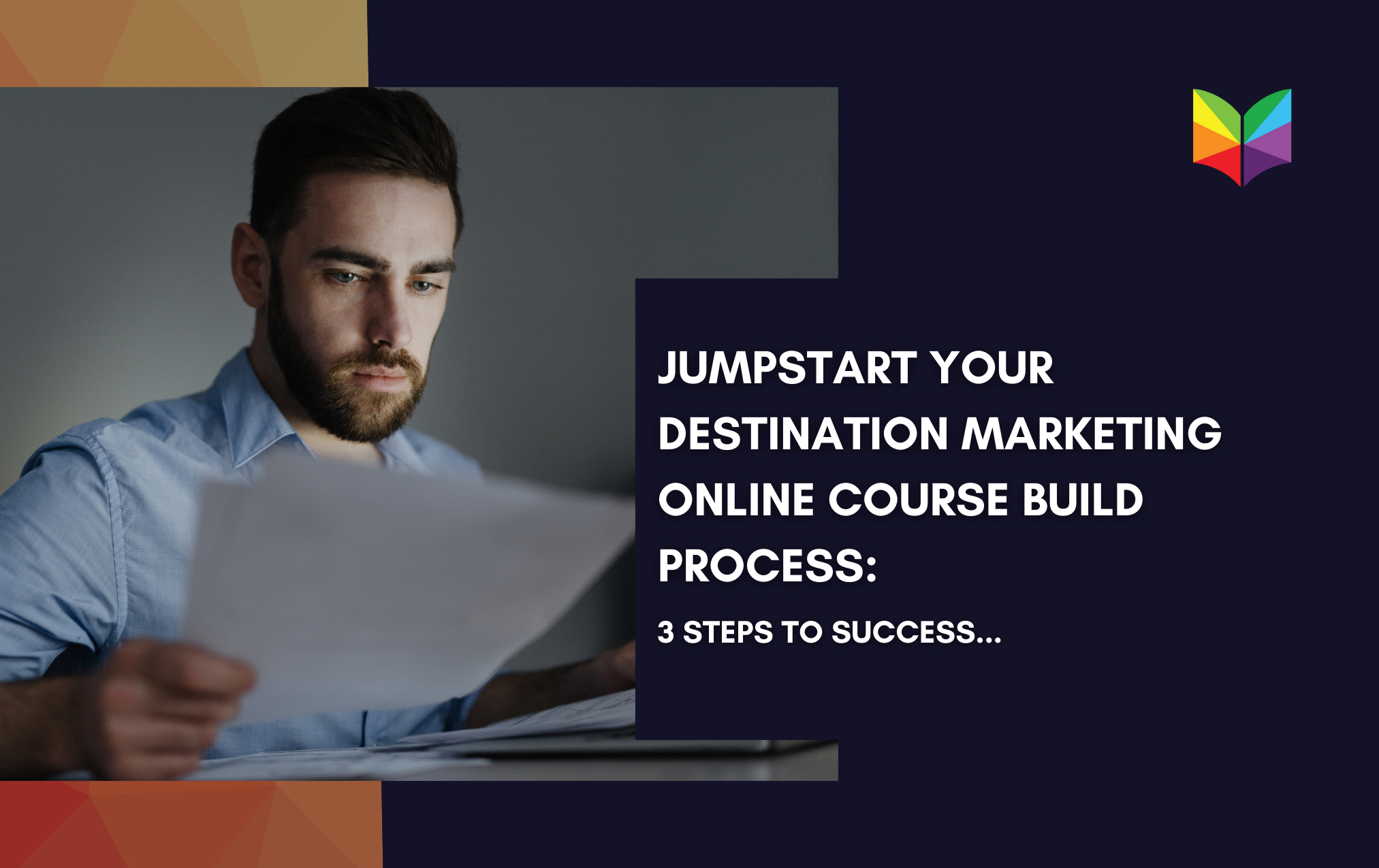
Jumpstart Your Destination Marketing Online Course Build Process: 3 Steps to Success
Creating an online course for destination marketing professionals can be both exciting and daunting. Whether you're just starting or feeling stuck in the process, here are three effective strategies to kickstart your journey and alleviate the perceived challenges:
1. Define Clear Learning Objectives
The foundation of any successful online course lies in clear learning objectives. You can begin by identifying what you want participants to learn and achieve by the end of each module or the entire course. This clarity not only guides your content creation but also helps participants understand what they can expect to gain from the course. Consider the following steps:
- Brainstorm and Outline: Gather your team or trusted colleagues to brainstorm ideas and outline the core topics and subtopics.
- Prioritize Content: Focus on the most critical information that participants need to know about your destination or service offerings.
- Align with Goals: Ensure that each learning objective aligns with your overarching marketing goals, such as increasing visitor engagement or promoting specific attractions.
2. Leverage Existing Resources and Expertise
Building an online course doesn’t mean starting from scratch. Tap into existing resources and expertise within your organization or network to streamline the process:
- Content Repurposing: Convert existing blog posts, videos, or presentations into course modules. This not only saves time but also ensures consistency in your messaging.
- Collaborate with Experts: Engage local historians, tour guides, or other subject matter experts to contribute insights and enrich the course content.
- Use Templates and Tools: Explore online course platforms that offer templates, instructional design tools, and analytics to simplify course creation and management.
3. Iterate and Test Early
Avoid the trap of perfectionism by adopting an iterative approach to course development:
- Create a Prototype: Develop a basic version of your course with essential content and structure. This prototype serves as a foundation for feedback and improvement.
- Gather Feedback: Share the prototype with a small group of beta testers, such as industry colleagues or pilot participants, to gather feedback on content relevance, clarity, and engagement.
- Iterate Based on Feedback: Incorporate constructive feedback to refine your course content, navigation flow, and user experience before launching to a broader audience.
Conclusion
By following these proactive steps, destination marketers can effectively jumpstart their online course-build process, overcome initial hurdles, and deliver valuable educational content to their target audience. Remember, the journey of creating an online course is as much about learning and refining as it is about teaching. Embrace the process, leverage available resources, and empower yourself to create an engaging and impactful educational experience for your participants.
Would you be ready to transform your destination marketing strategy through online education? Start today and watch your course come to life, empowering travel professionals worldwide with valuable insights and expertise.
